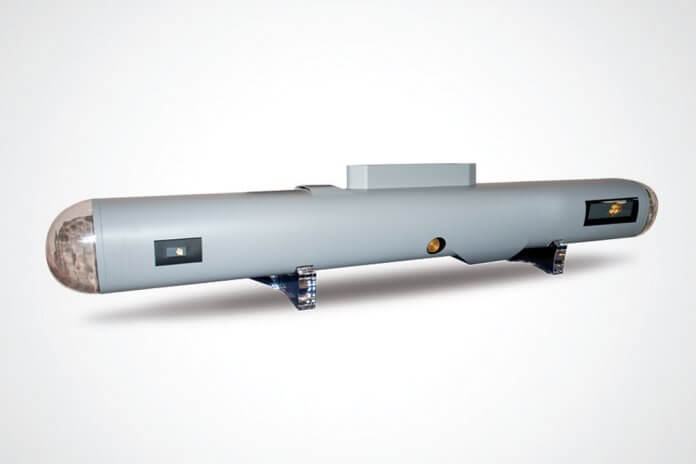
Elettronica is moving forward with the development of its EDGE airborne escort and stand-off jammer.
There may be a global Covid-19 pandemic in full swing, but this did not stop Abu Dhabi hosting the biannual IDEX defence and security exhibition between 21st and 25th February. That said, photographs of the show clearly indicate that attendance is down compared to the shindigs of the past.
Despite an understandably quieter-than-usual affair companies in the Electronic Warfare (EW) sphere were keenly promoting their wares both physically and virtually. This gave an opportunity to take the temperature of some significant EW initiatives like Elettronica’s EDGE airborne escort jammer.
Sharing the stage name of the guitarist of rock band U2, EDGE personifies the renaissance of interest in jamming pods for combat aircraft seen in Europe and elsewhere: The European Defence Agency, the European Union organisation tasked with managing and improving Europe’s defence capabilities, launched its Airborne Electronic Attack pod initiative back in April 2019. Saab is forging ahead with its Arexis EW architecture which can be housed internally or in a podded configuration.
Threats
While standard combat aircraft Integrated Self-Defence Systems (ISDSs) provide protection for individual planes, EW pods can detect and jam radar threats for several. This is important when flying in contested airspace where several aircraft in a strike package may have ISDSs of varying competence. A pod helps support tactical electromagnetic superiority and supremacy. With threats to airpower proliferating like Russia’s oft-cited Almaz-Antey S-400 (NATO reporting name SA-21 Growler) high-altitude/long-range Surface-to-Air Missile (SAM) system, there is an ever-present need to ensure that packages of aircraft are as well protected as possible when flying through dangerous airspace.
Performance
Elettronica took advantage of IDEX to update Armada on the pod’s progress. Roberto Torti, responsible for the company’s electronic countermeasures product line, revealed that the firm is using the common jamming core it has developed for other airborne, naval and land jamming applications at the heart of the EDGE.
The company says that the jammer boasts a “very high” effective radiated power to attack radars at stand-off ranges. Tactically, this ensures hostile radars can be engaged before a strike package arrives, and while the package is within the radars’ instrumented range. Like its musical namesake, the EDGE can make a racket. An active electronically scanned array transmits noise and deception jamming waveforms as well as discreet waveforms developed by the jammer’s digital radio frequency memory.
Cyber
It is possible that the EDGE’s capabilities could be enhanced in the future with cyber warfare functions. This would make sense. The pod’s electronic attack attributes could deliver malicious code to infect the computers and computer networks integral to the smooth running of a modern integrated air defence system and deployed ground-based air defences like SAM batteries. Code could be delivered via electronic attack into the radars and radio networks these defences rely upon. The EDGE can also be used passively to collect electronic intelligence giving the user two systems in one; an electronic support measure and an electronic attack system.













